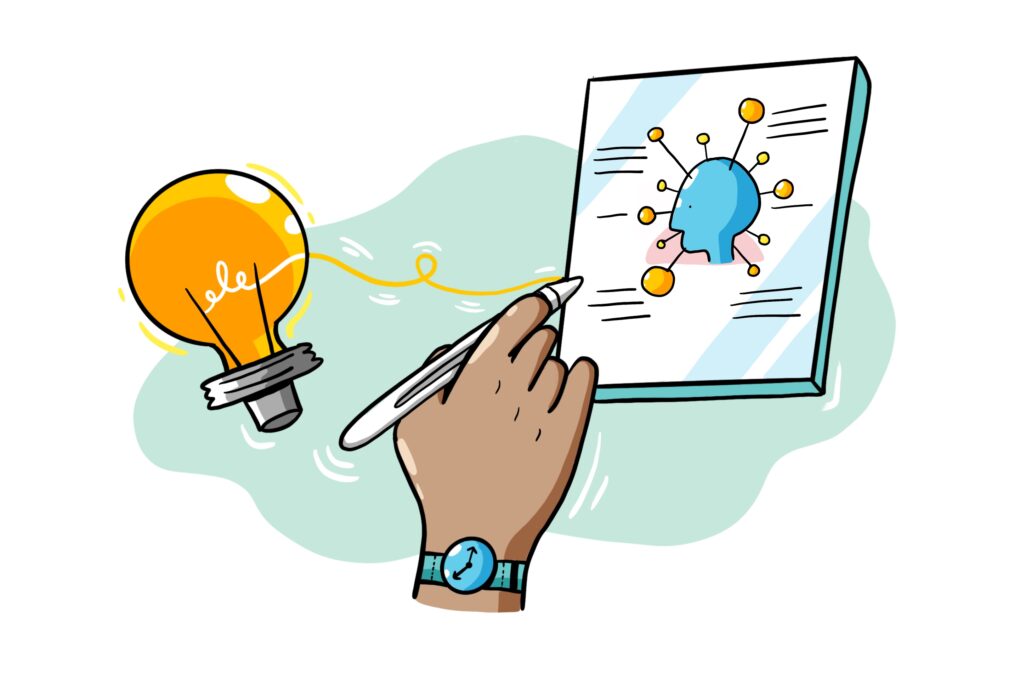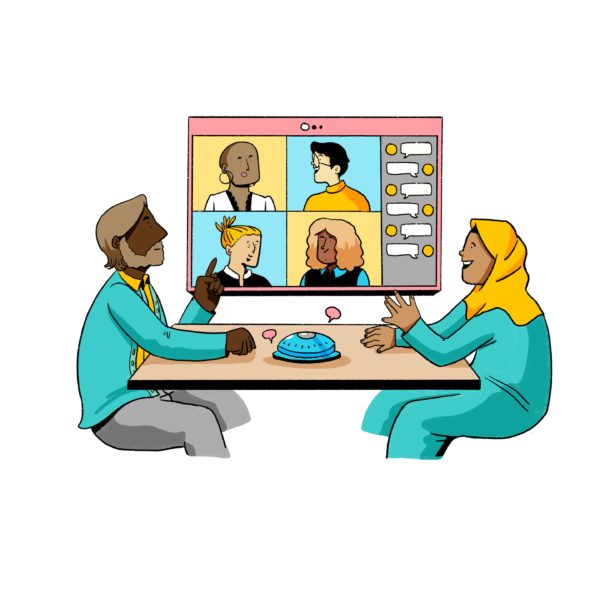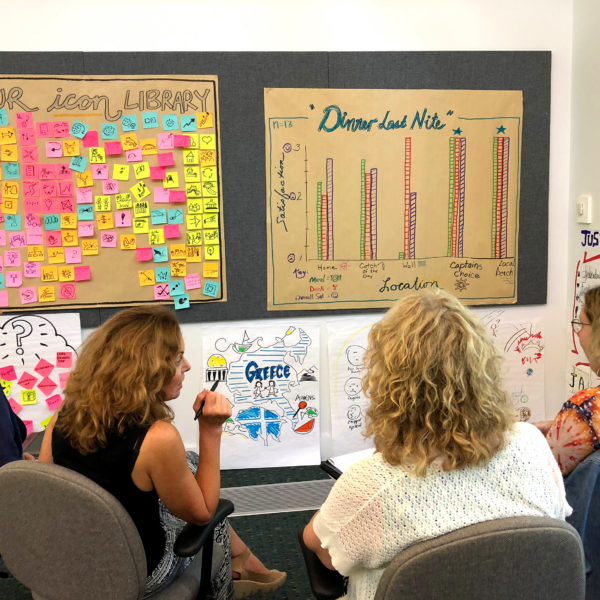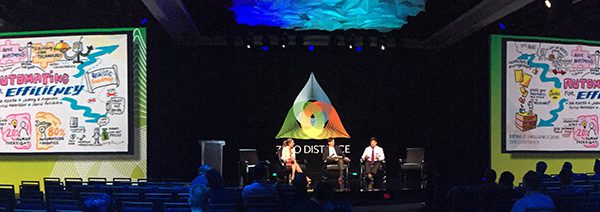Ah – graphic recording.
It’s the core service offered here at ImageThink, and it’s incorporated into nearly every job we do. If you’ve visited our website or frequent our blog, you’ve most likely heard us use the words “visual strategist” to describe our creative employees. It’s the all-encompassing term we use in place of “graphic recorder,” as graphic recording is but one function they do. Visual strategists are practitioners of Visual Strategy; that is, the strategic approach to thinking and working visually, to improve communication and creativity.
While conducting graphic recording for our clients on or off site, our visual strategists engage in a simultaneous three-step process: they listen for key ideas, synthesize them, and document them in visual form. In this article, we’re going to analyze their process to illustrate its use in ensuring a successful meeting, event, or conference. In turn, you’ll discover how it can be beneficial to your work, regardless of whether or not it involves drawing. Let’s get right into it, shall we?
Listen Up, and Listen Good
The first step of a visual strategist’s process is a communication skill we devote 55% of our time to – listening! But it’s not just lending an ear, it’s active listening. It may sound simple, but active listening requires thoughtful dedication.
Plenty of articles and studies on listening show that unfortunately, most of us are not great listeners. While someone is talking, we tend to give the ambiguous impression that we are hearing them. In most cases, however, our attention is spent formulating a response to what is being said. Research reveals that this issue is more common than you’d think, with only 10% of us labeled as effective listeners.
When our visual strategists facilitate a meeting, plan a session with clients, or live scribe, they are engaging in active listening. By filtering out any external noise, they are able to truly hear the responses of each individual. They draw their attention to areas of the conversation that reveal key ideas, takeaways, and action items. When confronted with complex topics or terminology, our visual strategists ask questions in order to relay information as intended.

Active listening can be an extremely beneficial skill to anyone in the workforce. When practiced, it can drastically improve connections and relationships, promote trust, and reduce conflict. Listening like a graphic recorder, as in, listen as if you’ll have to re-tell this information later, can make all the difference in developing this skill.
Connecting the Dots
The next step of the design thinking process is to synthesize the discussion. Simply put, synthesis is “putting things together in your head.”. When synthesizing, our visual strategists form connections between gathered information and begin to group like-concepts and ideas. As visual thinkers, they select from their personal visual inventories to carefully reflect a complete story.

For example, if we asked, “What do you like about New York?” and the responses were, “I like that the city is vibrant and full of life,” “I enjoy the atmosphere and ambiance,” and “There’s always something to do here.” our visual strategists might group these thoughts together and begin conceptualizing an image that combines these responses. The depiction may include people dining outdoors under bright, colorful lights, and besides dancing or singing street performers.
Synthesis ultimately helps improve how the end viewer processes information. It can be particularly useful when the topic being covered is complex or complicated. Doing this step consolidates information into clear, easily understood visuals and words that reflect the entirety of the discussion.
Synthesizing, like listening, can be useful in standard work functions, like writing an email, strategizing or providing recaps or updates. It clarifies and makes tasks more efficient.
The Magic of Visual Translation
The final step of the visual strategist’s process solely involves taking what they have heard and translating it into visual form. With the information they have gathered and organized, they can begin creating the eye-catching imagery and impactful wording that depict the key ideas and main points of the discussion. As this visual translation unfolds in real time, the meeting, conference or event is brought to life before your very eyes.
Although many of our visual strategists are trained in fine arts, you needn’t be an artist to take advantage of the benefits of visual documentation. Many of us practice visual notetaking in some form every day, whether it’s in the form of idle doodling, creating simple graphs to track performance, or using emojis in chats, emails, and texts.

Recapping a discussion, meeting, or event with visuals capitalizes on the fact that majority of people are visual learners. It’s a great way to relay information quickly and efficiently to your audience, and it helps reinforce ideas into memory. In addition, visual documentation serves as a tool for referring and recalling information.
You Don’t Have to Be an Artist to Think Like an Artist
Just because you aren’t a visual strategist or have a background in the fine arts doesn’t mean you can’t incorporate the steps of design thinking into your professional lives. With a little practice, we can all hone our communication skills to become better listeners, synthesizers, and translators.
If you want to see the visual strategist’s process in action or learn more about how a visual strategist can support your next project, strategy session, or conference, give us a call today. Or click here to see how they’ve transformed our clients’ meetings and events.



